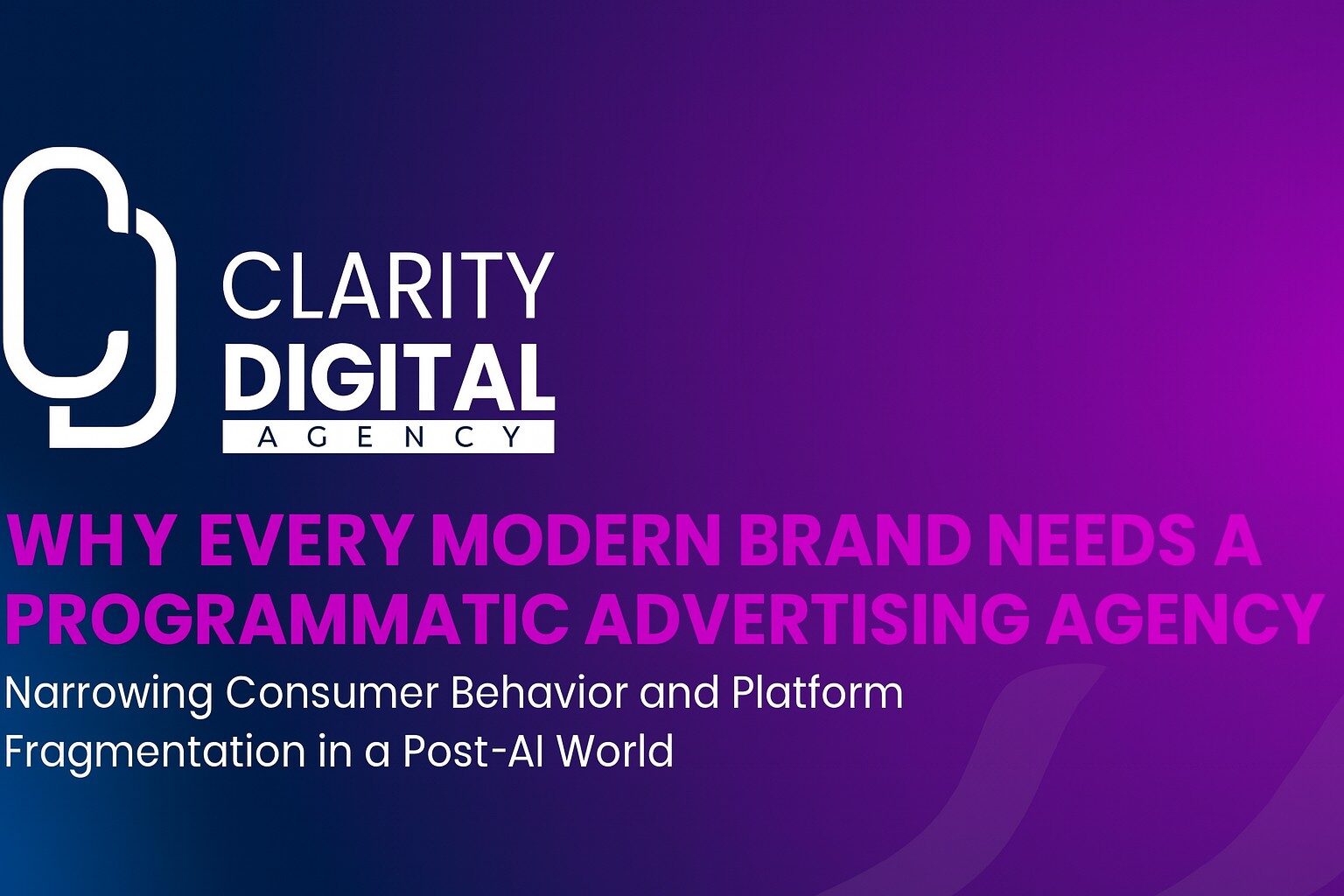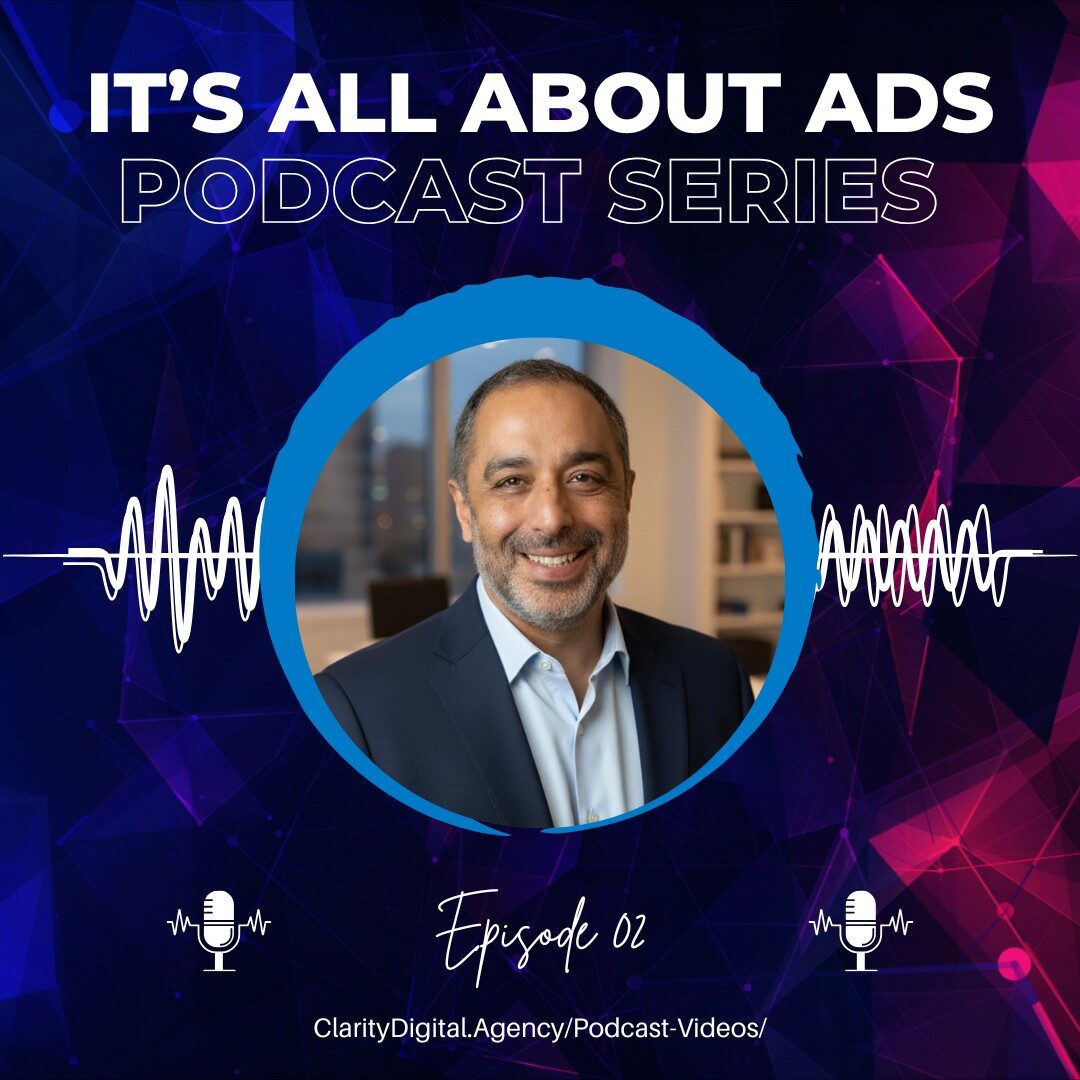Welcome to the Multiplatform, Post-AI Landscape
Digital marketing is constantly changing, but we are currently experiencing its most significant shift. Artificial intelligence(AI) has changed how campaigns operate and how consumers interact with brands. Users journey to the internet does not start with a Google search any more. The once straightforward journey of discovering products via Google Search has broken into many nonlinear micro-journeys.
Today, consumers can discover products in a TikTok video, look them up with an influencer on Instagram, read reviews on Reddit, request comparisons and perform other type of research on LLMs like ChatGPT or Perplexity, and finally buy through Amazon, retail app or on a website.
For brands, relying solely on SEO and paid search as primary growth strategies is no longer enough. The digital landscape is now focused on multiple channels, driven by behavior, and always evolving. Brands need to deliver relevant, personalized messages in real-time across every platform where their audience spends time. This is where brands need to invest in programmatic advertising (read what is programmatic advertising) and team up programmatic ad agencies for better results. They are now essential to modern marketing strategies.
Consumer Behavior Has Changed; Google Isn’t the Gateway Anymore
Ten years ago, optimizing for Google was crucial for visibility. Today, consumers navigate a much more complicated ecosystem. Research shows that over 70% of product discovery now occurs outside of Google. This discovery results from social content, influencers, native platform searches, and community recommendations.
- Gen Z is strongly influenced by TikTok and YouTube Shorts. Data from Kantar indicates that 40% of Gen Z uses TikTok and Instagram as their main search engines. A viral 15-second clip on TikTok can quickly generate millions of views and thousands of conversions.
- Millennials combine traditional research with social proof. They often begin their searches on Instagram or Pinterest. Pinterest has over 463 million monthly active users, and 80% of Millennials use the platform for finding products.
- Professionals use LinkedIn for industry insights and B2B research. LinkedIn has more than 950 million users, with four out of five members making business decisions.
- Shoppers are increasingly skipping Google and searching directly on Amazon or Walmart’s retail sites. According to Jungle Scout’s 2024 report, over 60% of product searches in the U.S. now start on Amazon.
- Niche audiences flourish on Reddit, Discord, and smaller communities. Reddit alone has over 57 million daily active users, and these groups often set trends long before they become mainstream.
- AI Search Tools like ChatGPT and Perplexity are now part of the research process. A 2024 Statista survey shows that 28% of U.S. consumers have used generative AI platforms for product research, indicating a significant change in search behavior toward conversational AI.
This shift in how consumers discover products means that brands can’t just focus on ranking high on Google or bidding on Google ads and expect success. They must engage users on the platforms they frequent most, with messages that are relevant to each experience. This is a considerable challenge, which is why programmatic advertising has emerged as the solution for managing these complex, cross-platform journeys.
Platform Fragmentation: Where Audiences Really Spend Time
Consumers today exist in various digital environments rather than just one. The rise of platforms has created a unique digital “playlist” for each individual. A single consumer’s day might look like this:
- 7 AM: Streaming a podcast on Spotify.
- 8 AM: Checking LinkedIn for industry news.
- 12 PM: Scrolling TikTok during lunch.
- 6 PM: Shopping on Amazon Prime while watching connected TV.
- 9 PM: Discussing niche interests on Reddit.
For brands, this fragmentation presents both challenges and opportunities. A universal message won’t work across these diverse contexts. Campaigns must be tailored for each environment: short, dynamic videos for TikTok; impactful storytelling for CTV; and conversational engagement for Reddit.
Traditional advertising approaches struggle in this environment. Programmatic advertising, however, thrives because it enables comprehensive planning and execution with precision.
The Case for Programmatic Advertising
4.1 Omnichannel Reach
A programmatic agency allows brands to manage campaigns across web, mobile, social, connected TV, streaming audio, in-app, and even digital out-of-home (DOOH), all from one interface. This integration eliminates silos and ensures your messages reach the audience wherever they are, instead of where you think they might be.
- Unified strategy: One team, one plan, all channels.
- Consistency: Seamless customer experience across platforms.
- Efficiency: Centralized reporting and optimization.
4.2 AI-Driven Targeting and Real-Time Optimization
AI and machine learning are crucial to programmatic advertising. Agencies employ advanced algorithms to:
- Create micro-segments based on demographics, psychographics, behavior, and context.
- Adjust bids, creative, and placements in real-time as new data comes in.
- Use predictive analytics to foresee shifts in consumer behavior before competitors do.
This approach goes beyond static campaign management; it’s a dynamic system that adapts to market changes.
4.3 Creative Personalization at Scale
In the post-AI world, creative work cannot be one-size-fits-all. Programmatic agencies leverage automation and dynamic creative optimization to send personalized messages to every audience segment.
- Platform-specific creative: Vertical videos for TikTok, interactive formats for Reddit, and cinematic storytelling for CTV.
- Dynamic testing: Automated A/B and multivariate testing enables real-time creative adjustments.
- Contextual relevance: Ads adjust to user intent and environment, reducing banner blindness.
4.4 In-Depth Reporting, Transparency, and Attribution
A common belief about programmatic advertising is that it lacks transparency. In fact, leading agencies provide:
- Complete visibility into every impression and placement.
- Detailed tracking of budget allocation and performance.
- Multi-touch attribution to evaluate ROI across the entire funnel.
- Actionable insights to guide future strategies.
4.5 Future-Proofing in a Changing Digital Landscape
Digital marketing is always changing. Privacy regulations, platform updates, and new technologies are inevitable. Programmatic agencies assist brands in staying ahead:
- Instant access to new platforms: Programmatic systems incorporate emerging channels without starting from scratch.
- Privacy-first strategies: Cohort-based targeting and contextual ads help keep you compliant in a cookieless future.
- Early adoption: Agencies implement cutting-edge tools like blockchain transparency and AI-generated creative.
How Programmatic Agencies Drive Outcomes: Enterprise Case Studies & Use Cases
- Retail: An omnichannel campaign that combined Amazon DSP, Instagram, and YouTube delivered a 25% increase in both online and offline conversions for a leading retailer. Dynamic creative adjusted to user behavior in real-time.
- CPG: A national CPG brand utilized AI-driven segmentation to deliver personalized ads based on time of day via Spotify, CTV, and grocery retail media. This resulted in a 40% boost in brand recall and measurable sales growth.
- B2B/SaaS: By merging LinkedIn interest targeting with contextual display on niche trade sites and Reddit conversations, a SaaS brand cut cost-per-lead by 30% while enhancing lead quality.
These successes illustrate how programmatic agencies orchestrate campaigns that adapt to complex consumer journeys.
Overcoming Misconceptions About Programmatic Ad Agencies
Myth 1: Programmatic is too expensive.
Reality: Modern programmatic scales to fit brands of all sizes, from startups to Fortune 500 companies.
Myth 2: You lose control.
Reality: Transparent dashboards and real-time reporting provide you with more control, not less.
Myth 3: It’s too complex.
Reality: Agencies work collaboratively with your team on planning, execution, and optimization, aligning campaigns with clear goals.
How to Choose and Work With the Right Programmatic Advertising Agency
Checklist:
- Do they provide true omnichannel capability (web, app, CTV, social, audio, DOOH)?
- Are advanced AI/ML tools available for targeting and creative optimization?
- Do they present case studies relevant to your industry?
- Is reporting detailed and transparent?
- Are they compliant with privacy regulations and ready for future technology?
- Will they assist in educating and aligning your internal teams?
Tips for Success:
- Share business objectives and first-party data openly.
- Request sample dashboards and live reporting demos.
- Insist on strategy planning sessions and regular optimization reviews.
Programmatic Ad Agencies Are the Growth Catalyst
In a world where consumer attention is spread across many platforms, a programmatic advertising agency is more than just a vendor; it’s your strategic partner for growth. They offer the technology, knowledge, and flexibility to connect with real people using the right message at the right time across all the channels that matter.
Brands that do not adapt will risk becoming invisible. Brands that embrace programmatic now will gain a significant competitive advantage.
Special Offer: Get a Free Pilot Program by Clarity Digital
Clarity Digital, in partnership with Illumin, has now launched a comprehensive end-to-end programmatic advertising services, and now, only for a limited titme, providing a limited-time free pilot program. You will only pay for media costs; all strategy, planning, management, and execution are free.
This is your chance to test omnichannel programmatic on a large scale without any agency fees. Apply now to take advantage of this exclusive offer and future-proof your digital marketing strategy.





